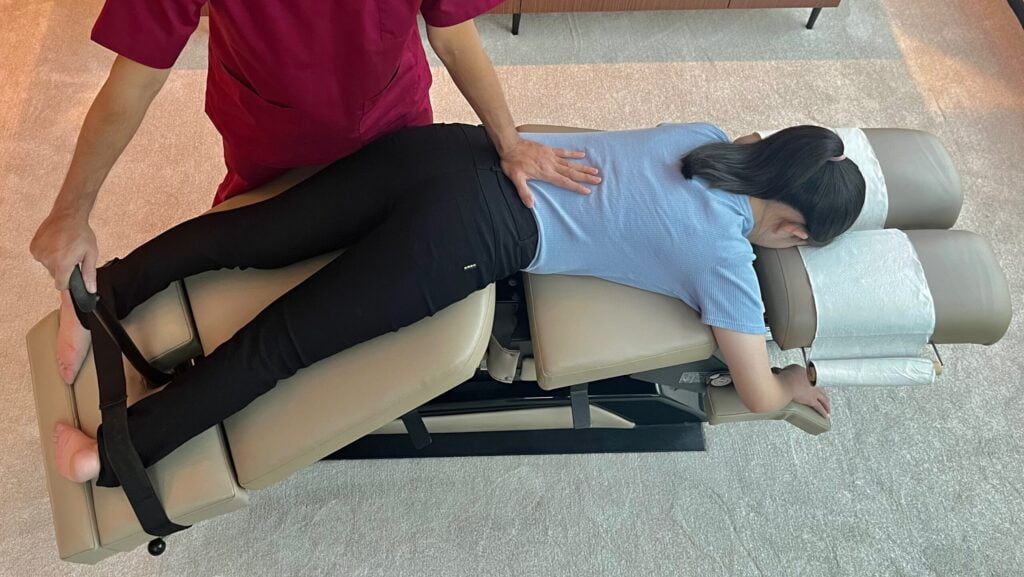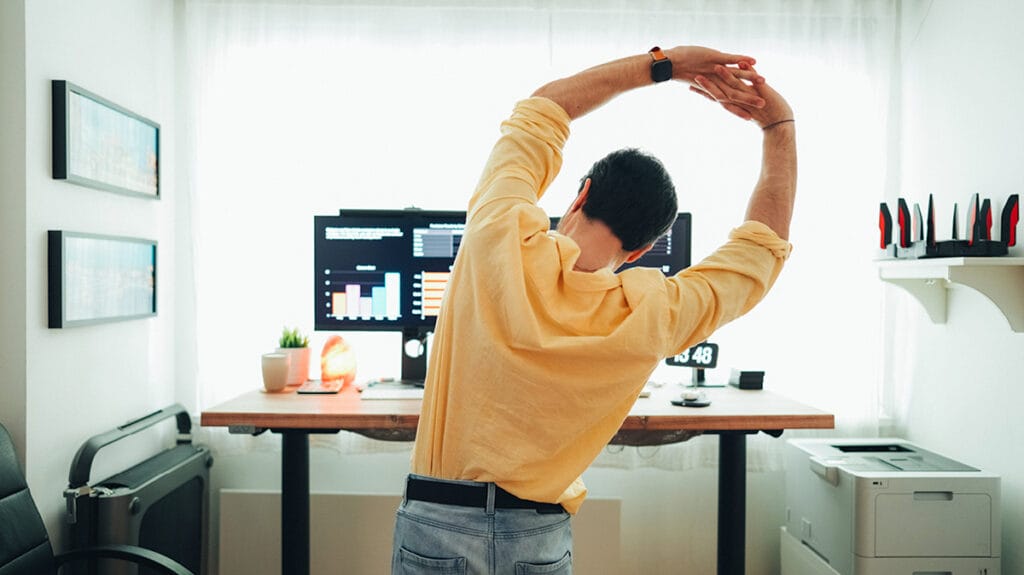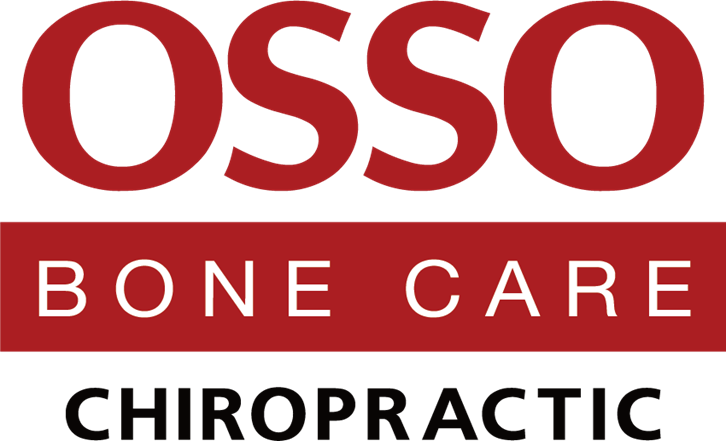Is It Safe to Crack Your Back? What Chiropractors Want You to Know
For many, it’s an unconscious habit after a long day at the desk, during a morning stretch, or when stress tightens every muscle in sight.
It’s easy to assume that if it feels good, it must be doing something right. But chiropractors say otherwise. That familiar “crack” might not be what you think, and doing it yourself could be doing more harm than good. So, what’s really happening when your back pops?
What’s Really Happening When You “Crack” Your Back
Let’s clear one common myth first: that sound isn’t your bones grinding or snapping. The “pop” you hear actually comes from tiny gas bubbles (mostly nitrogen) that form and collapse in the fluid surrounding your joints.
This natural process is called cavitation, and it’s completely harmless when it happens occasionally and naturally, like when you stretch after sitting for too long.
But when you force a crack by twisting your spine or pressing hard on your back, you’re no longer just releasing trapped air, you’re manipulating complex structures that include nerves, ligaments, and discs. And that’s where things can get risky.
The Risks of Self-Cracking Your Spine
When you self-adjust, you’re not targeting a specific joint, you’re moving several at once, often the ones that are already too loose.
Over time, repeated self-cracking can:
- Overstretch ligaments, making your spine unstable
- Irritate nerves and cause sharp pain or tingling
- Trigger muscle spasms, especially around the neck or lower back
- Aggravate existing spinal misalignments
The neck is particularly vulnerable. Chiropractors often see patients who “just twisted their neck a little” and ended up with severe stiffness, dizziness, or shooting pain down the arm.
The danger is the lack of control. Chiropractors train for years to adjust specific joints safely. When you do it yourself, you’re guessing, and your spine deserves better than guesswork.
Why Chiropractor-Performed Adjustments Are Different
When chiropractors adjust your spine, they’re not randomly twisting or cracking. Each movement is based on a careful analysis of joint motion, spinal alignment, and nerve function. Every joint in your spine moves in a specific direction and range, and a trained chiropractor knows exactly which one needs help, and which ones to leave alone.
While hearing a crack during a chiropractic session is usually safe, it’s not necessary to actually hear a crack to be effective or to relieve pain.
At Osso Bone Care, this process begins long before any adjustment is made. Each patient goes through a comprehensive spinal assessment, which often includes:
- Digital Full-Spine X-rays to map the entire spinal structure
- Postural scans to identify imbalances caused by sitting or past injuries
- Range-of-motion tests to assess flexibility and restriction
These tools help chiropractors pinpoint where the real issue lies, often it’s not the spot that hurts, but a different joint that’s over- or under-performing. For instance, a stiff lower spine might cause the mid-back to compensate, creating that “need to crack” sensation.
Once the problem areas are identified, chiropractors at Osso use gentle, controlled methods tailored to your spine’s exact condition.
- Osso Flexion Distraction® uses a specialized table to stretch and decompress spinal discs safely, ideal for patients with slipped discs or nerve compression.
- 3D Spinal Decompression applies computer-guided traction to relieve pressure and restore proper disc height, improving blood flow and healing.
- Pelvic Rebalancing addresses one of the most common root causes of back pain, uneven pelvic alignment from prolonged sitting or poor posture.
These adjustments don’t rely on force or guesswork. They’re guided by imaging, touch, and biomechanics, ensuring that every movement benefits the right joint at the right time.
Self-cracking may feel like relief, but chiropractic adjustment makes a difference. It retrains your spine to move properly, reduces nerve interference, and restores natural function so your back stays healthy, not just “loose.”
Chiropractic Adjustment vs. DIY Back Cracking

What you do at home and what a chiropractor does in a clinic may sound the same, but the impact on your spine is very different.
DIY cracking often happens when you twist your body in a way that releases pressure in the most mobile joints. This gives short-term relief but doesn’t fix the underlying cause. Over time, this can make your spine less stable, causing certain joints to become overly flexible while others stay stiff and misaligned.
Chiropractic adjustments, on the other hand, are targeted and controlled. A chiropractor uses imaging, posture analysis, and hands-on examination to identify exactly which joints need realignment.
This difference matters because repeated DIY cracking can actually worsen joint instability, while professional adjustments support long-term spinal health.
| Chiropractic Adjustment | DIY Cracking / Self-Adjustment |
|---|---|
| Performed by trained professionals using precise techniques | Random, non-specific movements |
| Targets restricted joints to restore normal motion | Often affects joints that are already hypermobile |
| Based on X-rays, postural scans, and assessments | Based on guesswork or habit |
| Helps stabilize and correct spinal alignment | May increase instability over time |
| Safe, controlled, and tailored to your condition | Can lead to joint strain or long-term misalignment |
| Aims for long-term correction and prevention | Offers only temporary relief without fixing the root problem |
Who Should Not Crack Their Back
Not everyone’s spine can handle the pressure of self-cracking. You should definitely avoid it if you have:
- Herniated or slipped discs
- Osteoporosis or brittle bones
- Recent injuries or spinal surgery
- Neck instability or arthritis
Even if you’re healthy, repeated twisting can still loosen supportive ligaments over time. Always get checked before doing anything that puts pressure on your spine.
What to Do Instead of DIY Cracking

If your back feels tight or “stuck,” try these safer alternatives before taking matters into your own hands:
- Stretch every 30–45 minutes. A simple shoulder roll or gentle twist helps your joints stay mobile.
- Strengthen your core. Strong abdominal and postural muscles keep your spine supported and stable.
- Mind your ergonomics. Invest in a supportive chair or lumbar cushion—Osso’s L5 support is designed for exactly that.
- Book a spinal check-up. Even if you feel fine, regular chiropractic visits can catch early misalignments before they turn painful.
Instead of twisting your torso to “crack” your back, try standing tall, interlocking your fingers behind your head, and gently arching backward. You’ll get a stretch, minus the risk.
Get a Spinal Assessment and Avoid DIY Cracking with Osso Bone Care
Cracking your own back might feel harmless, but it’s not always safe. The relief is temporary, and you may be unknowingly stressing joints that are already overworked.
Professional chiropractors, like those at Osso Bone Care Chiropractic in Kuala Lumpur, use targeted, and gentle methods to restore alignment without unnecessary force.
